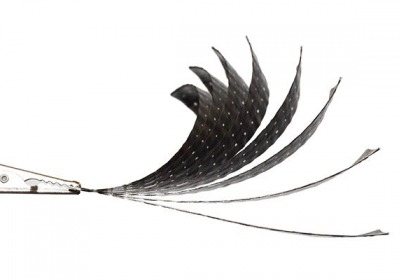MIT develops self-transforming materials that behave 'like robots without robots'
Wed, 15 Oct 2014A cross-disciplinary research lab at the Massachusetts Institute of Technology (MIT) has developed a suite of programmable materials, including carbon fiber, printed wood grain, textile composites, rubbers and plastics, that self-transform when exposed to an external stimulus.
Director of the Self-Assembly Lab, Skylar Tibbits, presented a TED talk on 4D printing in 2013, where he demonstrated how a flat sheet of material could effectively build itself when exposed to water, like a robot without a robot.
Following positive feedback from industries including aviation, automotive and manufacturing, his lab has been working on developing materials that change according to different activation sources, including heat, light, and air pressure, in addition to water – all of which have automotive relevance.
MIT is already working with advanced materials company Carbitex and the Briggs Automotive Company in the UK on a carbon-fiber rear wing that responds to water. The carbon fibre is bi-directional, so if the weather is bad, the wing's foil curves more, increasing downforce; as the rain stops, the foil returns to its original position.
The Lab is also working on a rubber that can be programed for adaptive traction, changing the shape of the tread on a shoe or tire in response to the conditions, while the Lab is collaborating with Airbus on a heat-activated material for jet engines that can regulate airflow to adjust cooling.
To develop and model the new materials, scientists have been using Autodesk's latest cloud-based design and programming platform called Project Cyborg. According to Tibbits, one of the breakthroughs this has allowed is the creation of a material that's applied to wood.
This can then control the curl of the wood according to its grain, and is a much simpler, less labor intensive process when compared to the steaming, or hand-forming process that's usually required to shape such a material.
Another application here is for a flat-pack from a well-known Swedish furniture store, which could be vacuum packed for easy transport, then erected simply by exposing it to moisture. However, it could also make the creation of previously complex and expensive interior wooden forms easier and cheaper, just by adding water.
By Tom Phillips

